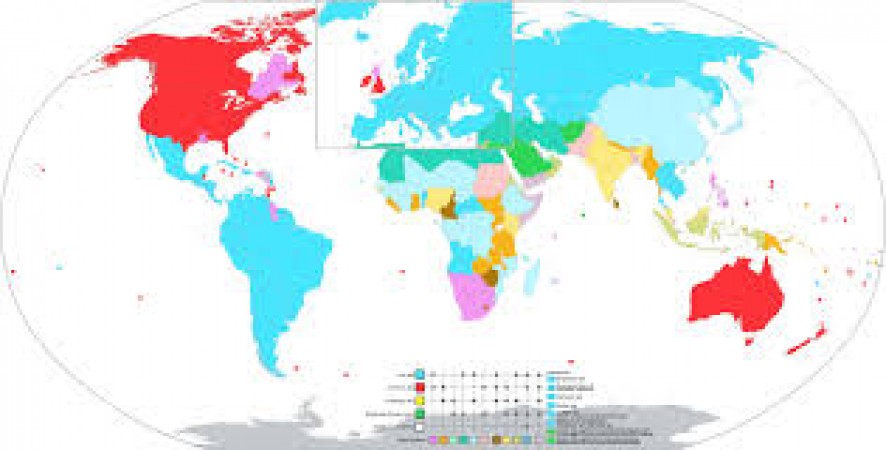
The coexistence of multiple religions in a diverse society has been a longstanding characteristic of human civilizations. However, the issue of parallel rights granted to different religions has sparked considerable controversy. In this article, we explore the nuances of this contentious topic, analyzing the impact on society, the legal framework, public opinion, and potential solutions to foster harmony among various religious groups.
Understanding Religious Rights
Definition and Importance
Religious rights encompass the freedoms and protections granted to individuals and communities to practice their faith without fear of discrimination or persecution. These rights are considered fundamental to human dignity and are enshrined in international human rights declarations.
Freedom of Religion
The freedom of religion is a cornerstone of democratic societies, allowing individuals to choose and practice their beliefs freely. However, the debate arises when different religious practices clash with each other or with secular laws and regulations.
The Debate on Parallel Rights
Cultural Sensitivity vs. Equal Treatment
One side of the debate argues for the accommodation of specific religious practices to honor cultural sensitivity. However, critics contend that this approach may inadvertently create parallel legal systems, raising questions about the equal treatment of all citizens under the law.
Balancing Rights and Responsibilities
Balancing the rights of religious freedom with the responsibilities towards the larger society is a challenging task. Striking the right balance while ensuring the welfare of all citizens remains a subject of intense discussion.
The Impact on Society
Social Cohesion and Harmony
Parallel rights for different religions can foster a sense of identity and belonging among communities. In an inclusive environment, this may contribute to social cohesion and harmony.
Potential for Conflict
On the other hand, granting parallel rights can lead to conflicts between religious groups, especially if one group perceives the other as receiving preferential treatment. Such conflicts may pose significant challenges to social unity.
Legal Framework and Challenges
Laws Governing Religious Rights
Legal frameworks often govern the exercise of religious rights. However, the interpretation and implementation of these laws can be subject to diverse perspectives and may not always resolve controversies satisfactorily.
Interpretation and Implementation Issues
The interpretation of religious practices and rituals can vary widely, leading to differing views on their acceptance within the legal system. Implementing these practices while adhering to the principle of equality can be complex.
Case Studies
Examples of Controversies
Several case studies around the world illustrate the controversies surrounding parallel rights. These examples offer insights into the complexities of accommodating diverse religious practices.
Resolutions and Outcomes
Examining the outcomes of such controversies can shed light on successful approaches to addressing the concerns of different religious groups.
Public Opinion and Media Influence
Role of Media in Shaping Perceptions
Public opinion and media coverage play significant roles in shaping the narrative around religious rights. Biased reporting or misrepresentation can exacerbate tensions and create further divisions.
Promoting Tolerance and Understanding
The media can also be a powerful tool for promoting tolerance, understanding, and acceptance of diverse religious practices.
Education and Interfaith Dialogue
Fostering Acceptance and Respect
Education and interfaith dialogue play vital roles in fostering acceptance and respect for different beliefs. By promoting knowledge and empathy, societies can work towards reducing conflicts.
Building Bridges Between Religions
Engaging in meaningful conversations and finding common ground can bridge gaps between religious communities.
Government Policies and Interventions
Secularism vs. Religious Accommodation
Governments face the challenge of balancing secularism with religious accommodation. Striking a fair balance requires careful consideration of diverse viewpoints.
Role of the State in Ensuring Equality
The state plays a crucial role in safeguarding the rights of all citizens, regardless of their religious affiliations.
Future Perspectives and Solutions
Emphasizing Common Values
Emphasizing shared values and principles among different religions can foster a sense of unity and mutual respect.
Promoting Multiculturalism
Promoting multiculturalism encourages appreciation for diverse cultural and religious expressions, strengthening societal bonds.
Encouraging Interfaith Cooperation
Encouraging cooperation and collaboration between religious groups can lead to a more cohesive and harmonious society.The controversy surrounding parallel rights of different religions in society is a complex and multifaceted issue. Balancing cultural sensitivity and equal treatment is crucial to maintaining social harmony. By fostering education, interfaith dialogue, and understanding, societies can work towards inclusive environments where diverse religious beliefs are respected and celebrated.
OpenAI to soon set up for the New App Launch on Android and iOS
Toyota to Open up with a New Generative Energy Source for Space Missions